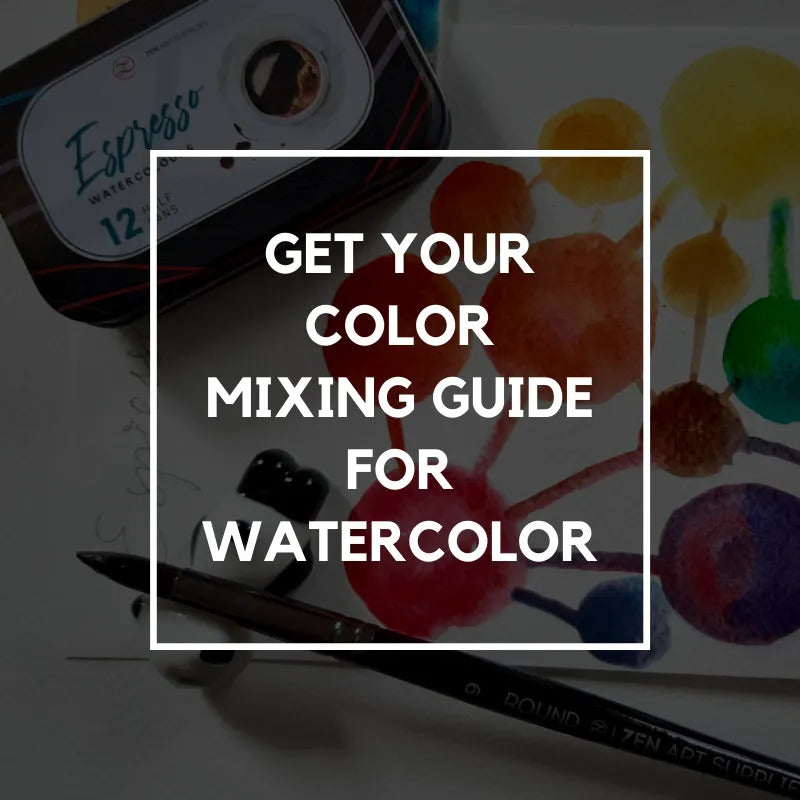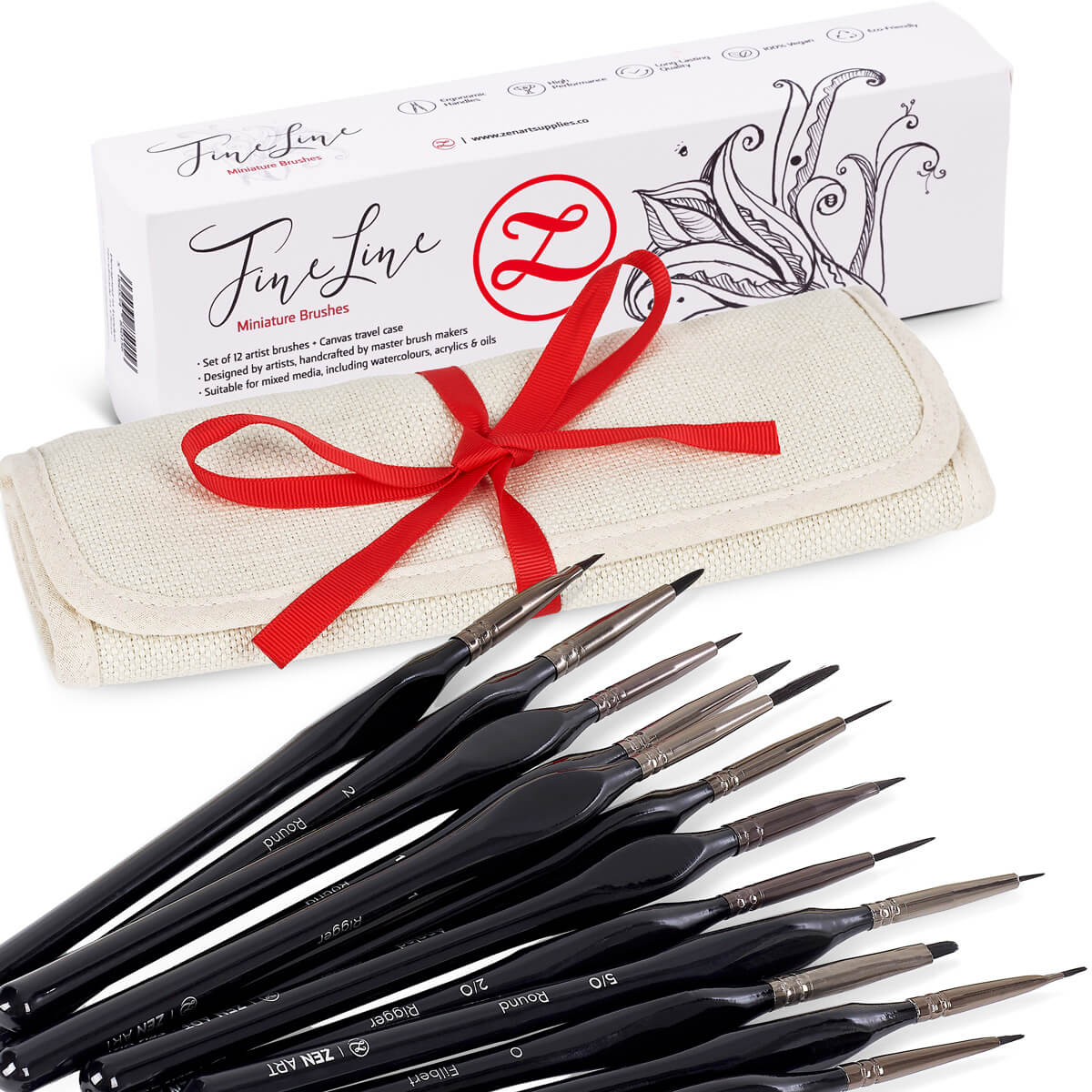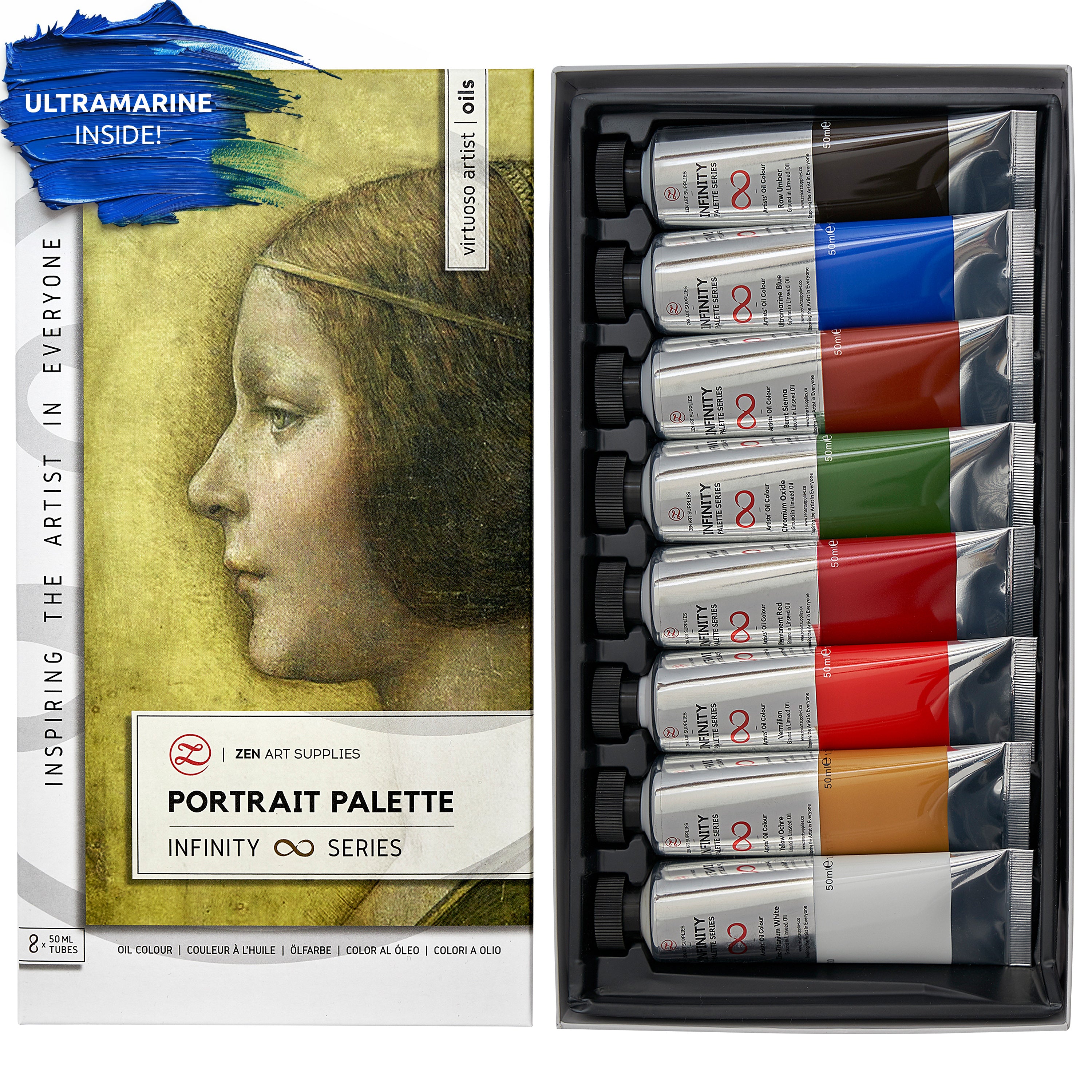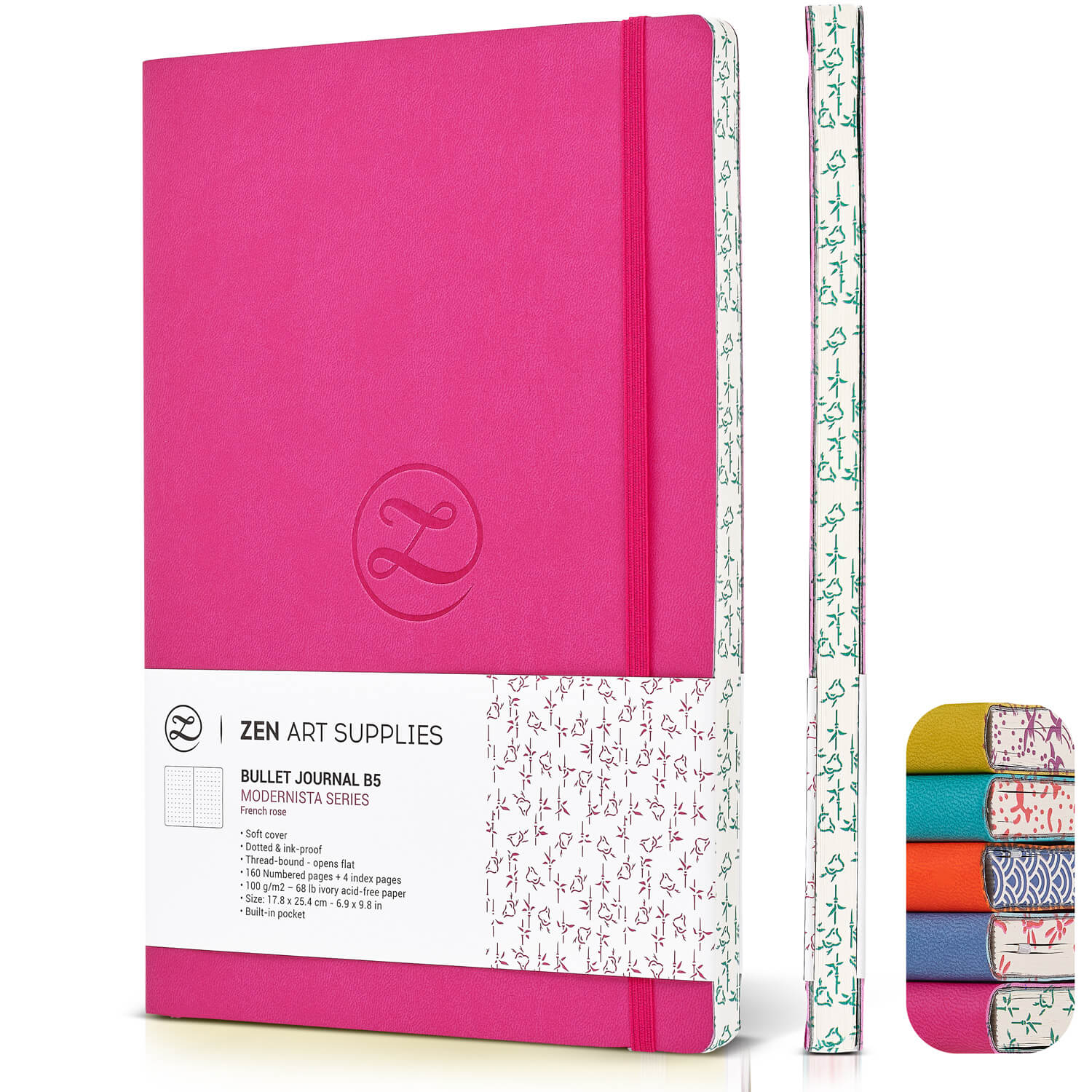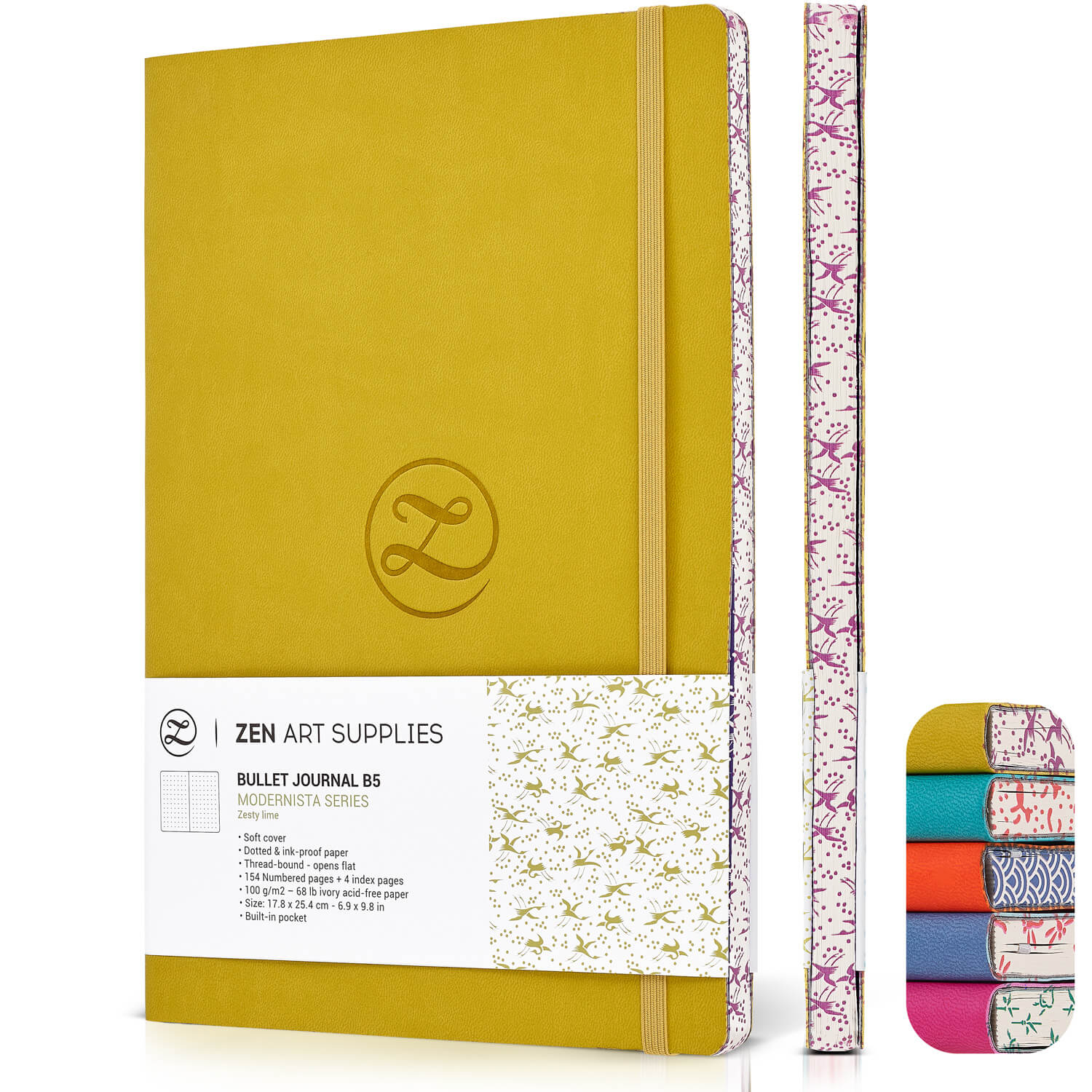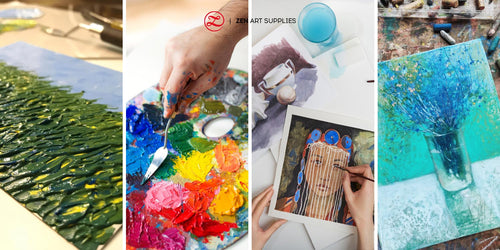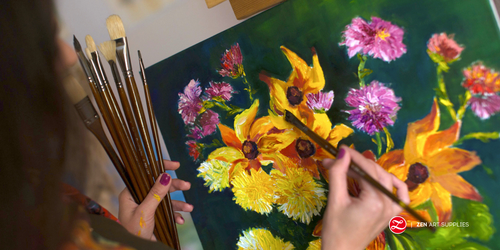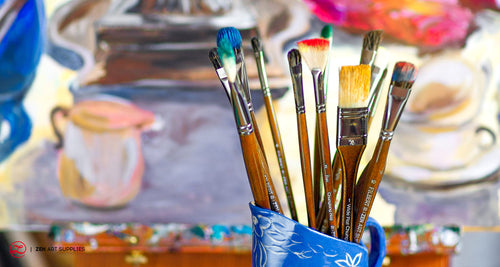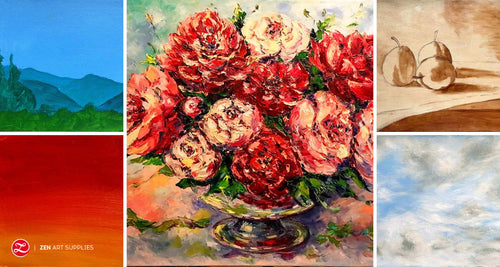How To Wash Acrylic Paint Brushes | Cleaning Dried Acrylic Paint Off Brushes | How To Clean Acrylic Paint Off Your Palette
Before finding out how to clean acrylic paint brushes, you might like to check out our previous Toolkit article. Learn about the different Oil Painting Brush Strokes and Techniques to achieve the results you're looking for in your oil painting journey!
Once you've invested in a set of good quality acrylic brushes, you'd want to keep them for as long as you can. So it's very important to learn the best way to clean acrylic paint brushes, I'm sure you don't want to keep on buying new ones all the time. You can use that hard-earned money to replenish your paints and buy other painting materials instead!

In this day and age of throw-away and single use mindset, let's do our small part of minimizing the waste that we contribute to the environment. We can do it, every small bit counts!
TABLE OF CONTENTS: TABLE OF CONTENTS: Looking for something in particular? Jump ahead using the links below:
How To Wash Acrylic Paint Brushes
Washing Acrylic Brushes Thoroughly
Lay Them Flat To Dry
Cleaning Dried Acrylic Paint Off Brushes
How To Clean Acrylic Paint Off Your Palette
How To Clean Acrylic Paint Brushes
Unlike oil paints, acrylics dry quickly, like really quickly. It's great when you want to paint something that dries fast. But it's not so great when the paint dries on your brushes in just a few minutes. It's such a difficult process to remove what you can at this point. And your brushes will never be the same, so it's best not to wait for this to happen. It's also fairly easy to clean them compared to brushes used with oil paints.
How To Wash Acrylic Paint Brushes
While Painting
Once you're done using it for a certain color, wash your brush right away. First start by wiping off as much of the paint as you can on some scrap paper. I keep old newspapers, brown paper bags, and kraft paper used for wrapping just for this purpose. Let's be kind to the environment and limit the amount of paint that goes down the drain. Then rinse it thoroughly, swish it around your jar or bucket of water to remove the paint.

You don't want to be doing this half-heartedly and leaving leftover paint stuck in the bristles, especially near the ferrule. I have two jars/buckets just so I can give it a proper rinsing. One regular repurposed glass jar and a special one designed for brush cleaning with ridges as the bottom. Those bumps and ridges are very helpful! Do this several times to get as much of the paint out as you can. This is enough if you're still painting and planning to use it again shortly during the session.


Wash your acrylic brushes as soon as you're done using them!
For The Next Day
If you're going to be using them for painting the following day, you have to rinse your acrylic paint brushes as well as you can using warm water - warm, not hot. Then wipe them off on a paper towel or a cloth you set aside just for this purpose. You can see if there's still paint left as it will rub off and stain your towel/cloth. Repeat the rinsing and wiping off until they're clean.
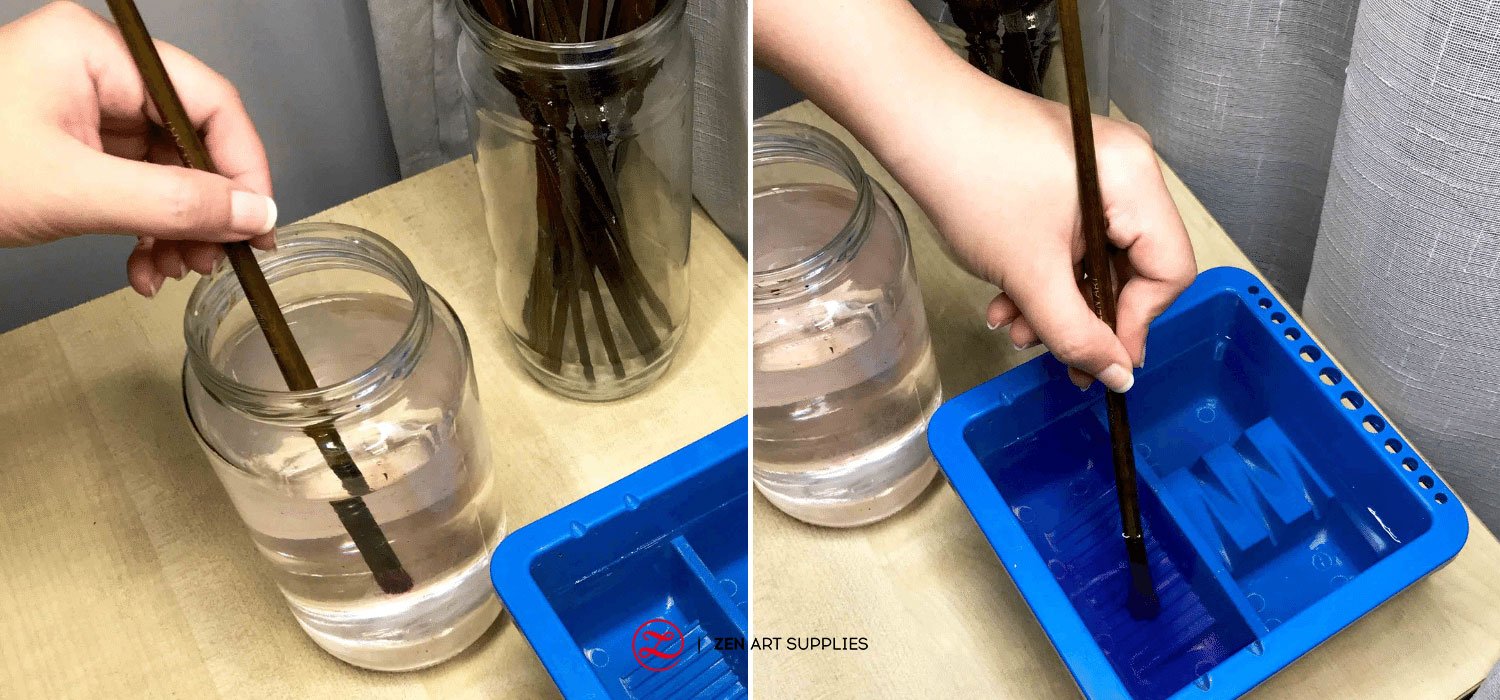
Some prefer to use their palm/fingers to help dislodge the remaining paint from the bristles/hair. Wear rubber gloves if you're worried about the paint getting into your skin. Or you can use specially made paint brush washers (as I mentioned above) that come with ridges or bumps at the bottom of the bucket to help with the acrylic paint cleanup. You can even create a DIY setup if you're up for it.

Don't leave your acrylic paint brushes standing in the water indefinitely no matter how much in a hurry you are. This will speed up the degradation of your paint brushes' integrity.
- Firstly, the glue that holds the bristles/hair together inside the ferrule will be loosened, and that will cause them to start falling out.
- Next, the coating on your brushes' handles will be weakened and may cause them to slowly start flaking off. This will leave the wooden handles exposed and unprotected.
- Finally, your brushes' shapes will be ruined. If you leave them dunked in the water head down for a long time, the brushes' hair/bristles will most likely splay, become bent or misshapen.
I'm sure you don't want any of the above to happen, so try to keep them in mind whenever you're in for some painting time.
Washing Acrylic Brushes Thoroughly
Have you ever wondered why your brushes slowly harden over time even though you wash them as detailed above? That's because of stubborn leftover paint, the trickiest part to remove is the area around the ferrules. And they dry up and build up over time, until one day you just end up with a stiff and unwieldy brush. So how to clean acrylic paint off brushes thoroughly? Read on!
If you don't plan on using them for a few days, I suggest you do a deeper cleaning of your acrylic paint brushes. You can use a mild regular soap that doesn't contain harsh ingredients and added coloring, or you can get a brush cleaning soap specifically made for cleaning artists' brushes. The added benefit of brush cleaning soaps are they're also moisturizing and double as brush preservers. You can also use dish soap, but I suggest using it only for synthetic brushes as it can easily strip the natural oils of the brushes with natural hair/bristles.

Lathering Up
Wet your brush in clean water and then drag it back and forth on your soap to lather it up. Don't use stabbing or pushing motions, be gentle with your acrylic paint brushes and use pulling motions instead.

You can use the palm of your hand (rubber glove protected if you're not sure about your paint's safety level), a rounded container, or a special paint puck brush cleaner (I reused an extra one I had that was for make-up brushes). Use any of those to properly work the lather into the brush's hair/bristles, use circular motions. You'll see the lather changing color as leftover paint is slowly being removed, especially from the area near the ferrule.


Then rinse your brush thoroughly. Repeat this process until you're satisfied that your brushes are totally clean and paint free. Use your fingers to check between the bristles/hair, remember to be gentle!

Now, that's the hardest part of the how to clean acrylic paint brushes process.
Lay Them Flat To Dry
Now that your brushes are as clean as you can make them, it's time to let them dry properly. First gently wipe off excess water from the brushes with a paper towel or clean cloth. Just like the clothing that you have that are labelled "lay flat to dry," you'll be doing the same with your acrylic brushes. Lay them flat to dry on a clean paper towel or cloth so the dripping water is absorbed and won't pool around and under your brushes.

Don't leave your brushes to dry standing in a jar, instead of the water leaving the brushes, it will go down inside the ferrule and loosen the glue. Which you already know will lead to loosened hair/bristles, and then cause them to fall out while painting. Another reason is that the brush hair/bristles will hold their original shape better when they are allowed to dry this way.
Our Renoir Collection and Artist's Choice brushes can be used both for acrylic and oil paints. Cleaning paint brushes used in oil painting requires a different method. Find out in our How To Clean Oil Paint Brushes article what those steps are.
Cleaning Dried Acrylic Paint Off Brushes
How to get dried acrylic paint out of brushes? Is it still possible? Yes! So don't throw them out just yet, you can still try saving those precious brushes. There are several ways that you can try to remove the dried acrylic paint from your brushes. Below I will list down the different ways that several artist friends swear by. Keep in mind not all your brushes will be restored to their former glory, it all depends on how much paint there is and how long they've been left to dry.
Synthetic brushes are more sensitive to solvents, thankfully they are also cheaper so it's not too painful if you don't get to successfully rescue them. While brushes with natural hair/bristles are much sturdier against solvents. So keep that in mind when trying to remove the dried up paint.
- You can use acrylic paint brush cleaners and restorers that are specially designed and created for this reason - removing dried up paint off brushes. Thankfully there are many products to choose from nowadays. Just soak the hair/bristles for some time (take care not to submerge the ferrule) and then rinse in warm water and soap. Repeat as needed.

- Some artists swear by rubbing alcohol. Using a diluted solution first, soak your brushes for a few minutes and work it thoroughly through the bristles/hair. Then rinse just as thoroughly. Repeat the process and use a stronger solution if the diluted one didn't work out too well, keep repeating until you get as much of the paint clumps out. Follow with a soap and warm water cleaning after.

- You can use an old fine toothed comb or a fine toothed metal comb to gently remove the dried up paint after you've soaked them. It can help pry loose some of the stubborn paint from the bristles/hair.

If you end up with some that seem beyond saving, don't give up on them. You can still use them, just in a different way - maybe they'll be great for creating certain textures or effects.
How To Clean Acrylic Paint Off Your Palette
First off, I myself don't use wooden palettes for acrylic painting as it's near impossible to properly remove acrylic paint off wood. It's going to take a lot of elbow grease and major scrubbing, and you still won't end up with a clean palette. Wood is porous and it easily absorbs the acrylic paint, so take that into consideration when deciding which kind to use. I prefer to use ones made of clear acrylic (mimics the look and feel of glass), plastic, ceramic, palette paper, and my personal favorite - a stay wet palette.
This step is applicable to all palettes listed below: If the paint is still wet and you're about to clean it up, first wipe off the paint with scrap paper or paper towels. Then wash with warm water and soap, dish soap is great for this. You can also use a sponge to help you scrub off the paint properly. Don't use an abrasive scrub especially with the acrylic, plastic, and ceramic ones as it will scratch up their smooth surfaces.
Cleaning up a tempered glass palette
If nearly dry, you can try wiping off what you can. Or you can wait for the leftover paint to completely dry and then scrape it off using a razor blade, the smooth and hardy glass surface will make it a relatively painless experience. Acrylic paint clean up is easier as tempered glass palettes are fully flat. You can also use this palette when painting in oil. Then follow with a soap and warm water washing up.
Removing acrylic paint from clear acrylic palettes
Though it looks and feels like glass, it's not as hard. So I don't suggest using a razor blade as it will scratch up or chip the smooth surface. Instead peel off as much dried up paint as you can (I actually find this therapeutic), sometimes they just come off in big patches just like that. Then use a solvent - alcohol - to remove leftover paint, and then a soap and warm water washing up. Just like the tempered glass one, you can also use this palette for oils.


Acrylic Paint Cleanup On Plastic Palettes and Ceramic Palettes
Plastic palettes are a popular choice as they are quite cheap, come in various shapes and sizes. They have wells for controlled color mixing, and are quite light on the hand - perfect for plein air painting or when painting while standing. You can use them for other mediums as well if you like to switch around between acrylic, watercolor or oil. Ceramic palettes are heavier and more expensive, they are more popular with watercolorists.
Similar to acrylic palettes, you start by peeling off the dried paint, then followed by using a solvent to help remove the rest. Don't use anything sharp to remove the paint, you'll end up with a scratched up palette and it will make it much harder to remove the paint next time. I also use warm water and soap for extra cleaning after.


Personally, I mainly use my ceramic palettes for my watercolors, I like to have assigned palettes for each medium that I use. Curious to find out what the differences are between watercolor and acrylic? Read about it in Acrylic vs Watercolor - The Key Differences.
Which Palette Is Easiest To Clean?
I hear that the tempered glass one is the easiest to clean as it doesn't get scratched easily and the paint cleans off much faster and easier. But I personally haven't had the chance to try it out, I'm already happy with my acrylic palettes. They're perfect for bringing along for plein air painting or when I know I'm going to be holding one for an extended period of time. Try different ones to see which palette suits you best and to better get acquainted with the clean up process.

My synthetic brushes don't last as long as my natural hair ones, but I still try to keep them with me for as long as I can. I tend to have my favorite brushes when painting, and I become so familiar with them that it helps make the creative process that much easier. If you take care of them and learn how to clean acrylic paint brushes properly, they'll perform better too. I hope you found the instructions useful, may this guide you through the proper cleaning and care of your brushes and palettes.
We'd love to hear back from you!
What kind of brushes do you use for acrylic painting - synthetic or natural hair? Do you have your own method of cleaning your brushes? Which palette/s do you prefer to use? What future content would you like to see from us? Let us know what you think, we'd love to hear back from you. Leave a comment or any questions you have below and we'll happily get back to you! Join our friendly art community Painting Inspiration Daily on Facebook. You can share your art and ideas, watch LIVE tutorials, and be inspired to paint!
Learn the different basic watercolor techniques plus some interesting textural effects on our next Toolkit article - Watercolor Painting Techniques - The Essential Guide. Until then, keep up with the caring and cleaning of your acrylic paint brushes and palettes!
- MEET THE AUTHOR-

Kathleen is the Wordsmith at ZenART, resident artist and art editor. When God sent a shower of talents, Kathleen made sure she got a basketful of them! She's a visual artist with practical knowledge on various fields from painting and sculpture, to costume and set design which comes in very handy when writing about various art techniques and theories. She also shares her passion for the arts through teaching. She runs her own brand of handmade wirework jewelry designs.












